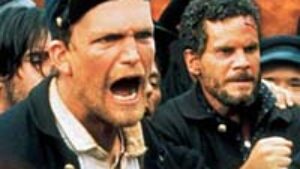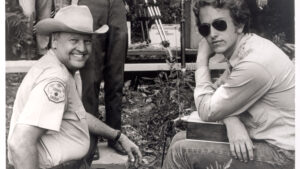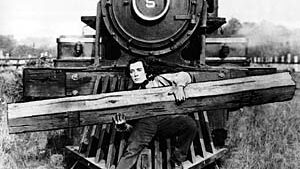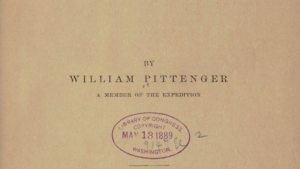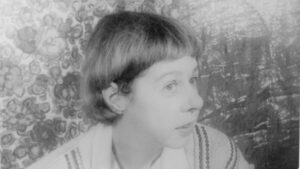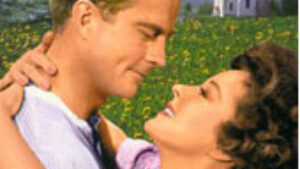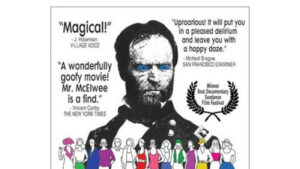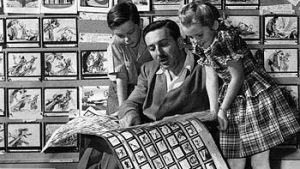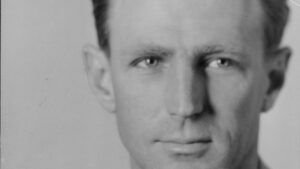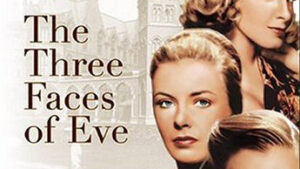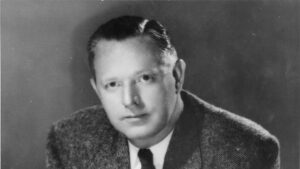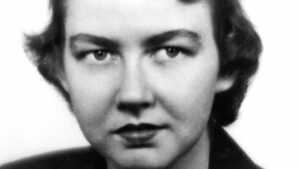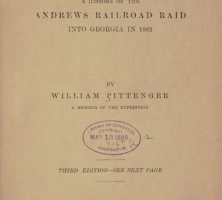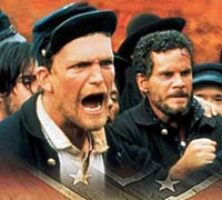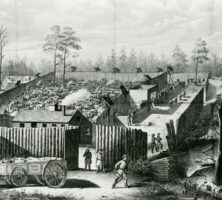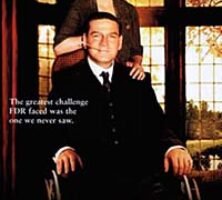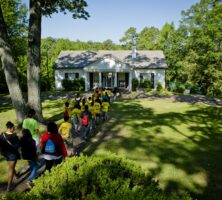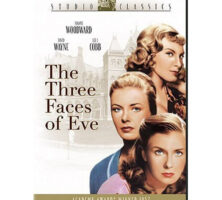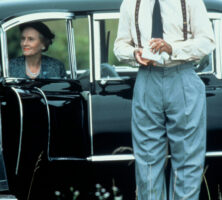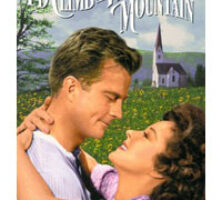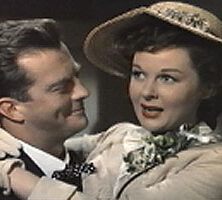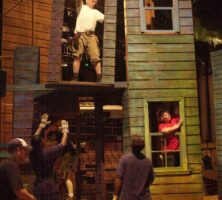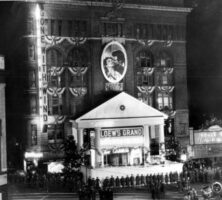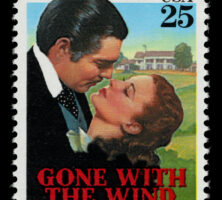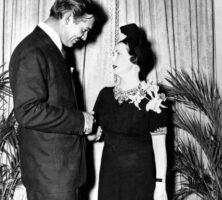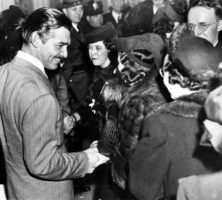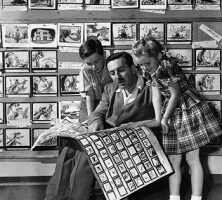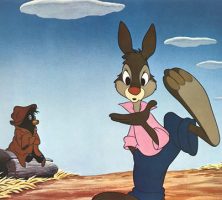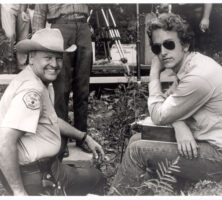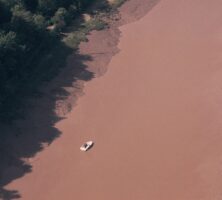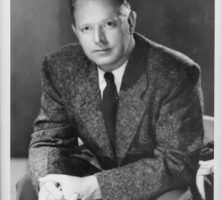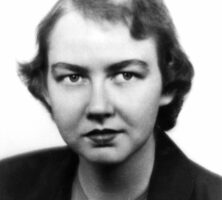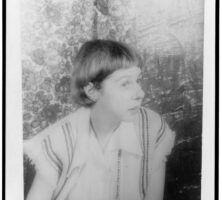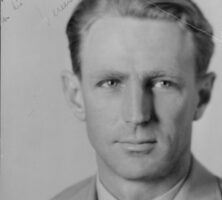The New Georgia Encyclopedia is supported by funding from A More Perfect Union, a special initiative of the National Endowment for the Humanities.
The Great Locomotive Chase, a Disney film released in 1956, depicts the events of the Andrews Raid of 1862, in which Union raiders seized a Confederate train in north Georgia during the Civil War. The film is an adaptation of the written accounts of William Pittenger, a Union participant in the raid.
Courtesy of Library of Congress
The New Georgia Encyclopedia does not hold the copyright for this media resource and can neither grant nor deny permission to republish or reproduce the image online or in print. All requests for permission to publish or reproduce the resource must be submitted to the rights holder.
Silent film comedian Buster Keaton directed and starred in The General (1927), a fictionalized account of the famous Andrews Raid of 1862, in which Union raiders seized a Confederate train in north Georgia during the Civil War.
Photograph from www.filmreference.com
The New Georgia Encyclopedia does not hold the copyright for this media resource and can neither grant nor deny permission to republish or reproduce the image online or in print. All requests for permission to publish or reproduce the resource must be submitted to the rights holder.
Sherman's March (1986), a documentary film by Ross McElwee, chronicles the filmmaker's search for love in the modern South while loosely retracing Sherman's 1864 march to the sea. Portions of the film take place on Stone Mountain, near Atlanta, and on the Georgia coast, near Savannah.
The New Georgia Encyclopedia does not hold the copyright for this media resource and can neither grant nor deny permission to republish or reproduce the image online or in print. All requests for permission to publish or reproduce the resource must be submitted to the rights holder.
Filmmaker and professor Ross McElwee is pictured during the filming of Bright Leaves. In 1986 McElwee's documentary Sherman's March, much of which was filmed in Georgia, was released to critical acclaim.
Image from AdrianMcElwee
The New Georgia Encyclopedia does not hold the copyright for this media resource and can neither grant nor deny permission to republish or reproduce the image online or in print. All requests for permission to publish or reproduce the resource must be submitted to the rights holder.
The television film Andersonville (1996), directed by John Frankenheimer, portrays the experiences of Union soldiers held at Andersonville Prison, the notorious Civil War prison located in Sumter County. The miniseries, starring Carmen Argenziano, Jarrod Emick, Frederic Forrest, and Ted Marcoux, was filmed partially in Coweta County.
The New Georgia Encyclopedia does not hold the copyright for this media resource and can neither grant nor deny permission to republish or reproduce the image online or in print. All requests for permission to publish or reproduce the resource must be submitted to the rights holder.
The New Georgia Encyclopedia does not hold the copyright for this media resource and can neither grant nor deny permission to republish or reproduce the image online or in print. All requests for permission to publish or reproduce the resource must be submitted to the rights holder.
A sketch of the Andersonville prison, by John B. Walker (1864). The set of Andersonville, a 1996 television film directed by John Frankenheimer, was modeled on the buildings of the original prison.
Courtesy of Georgia Historical Society, Georgia Historical Society Collection of Photographs, 1870-1960, #GHS 1361PH-21-13-4296.
The New Georgia Encyclopedia does not hold the copyright for this media resource and can neither grant nor deny permission to republish or reproduce the image online or in print. All requests for permission to publish or reproduce the resource must be submitted to Georgia Historical Society.
Warm Springs (2005), a film produced by Home Box Office, chronicles the experiences of Franklin D. Roosevelt at his home in Warm Springs during the 1920s. The film, which stars Kenneth Branagh as Roosevelt and Cynthia Nixon as Roosevelt's wife, Eleanor, was filmed on location at Warm Springs, in Meriwether County.
The New Georgia Encyclopedia does not hold the copyright for this media resource and can neither grant nor deny permission to republish or reproduce the image online or in print. All requests for permission to publish or reproduce the resource must be submitted to the rights holder.
Franklin D. Roosevelt first visited Warm Springs in 1924, after contracting polio, and soon thereafter bought a home in the area. The house later became known as the "Little White House," after Roosevelt's election as U.S. president in 1932.
Courtesy of Explore Georgia, Photograph by Ralph Daniel.
The New Georgia Encyclopedia does not hold the copyright for this media resource and can neither grant nor deny permission to republish or reproduce the image online or in print. Requests for permission to publish or reproduce the resource may need to be submitted to Explore Georgia.
The Three Faces of Eve (1957), a film starring Georgia native Joanne Woodward, is an adaptation of a book by the same name, written by doctors Corbett H. Thigpen and Hervey M. Cleckley. The narrative chronicles the experiences of a young housewife with multiple personalities, who was initially diagnosed and treated at the Medical College of Georgia (later Georgia Health Sciences University) in Augusta. The film was produced and directed by Nunnally Johnson, another Georgia native.
The New Georgia Encyclopedia does not hold the copyright for this media resource and can neither grant nor deny permission to republish or reproduce the image online or in print. All requests for permission to publish or reproduce the resource must be submitted to the rights holder.
The New Georgia Encyclopedia does not hold the copyright for this media resource and can neither grant nor deny permission to republish or reproduce the image online or in print. All requests for permission to publish or reproduce the resource must be submitted to the rights holder.
Jessica Tandy (as Daisy Werthan) and Morgan Freeman (as Hoke Colburn) on location in Georgia while filming Driving Miss Daisy (1989).
Courtesy of Georgia Department of Economic Development.
The New Georgia Encyclopedia does not hold the copyright for this media resource and can neither grant nor deny permission to republish or reproduce the image online or in print. Requests for permission to publish or reproduce the resource may need to be submitted to the Georgia Department of Economic Development.
The New Georgia Encyclopedia does not hold the copyright for this media resource and can neither grant nor deny permission to republish or reproduce the image online or in print. All requests for permission to publish or reproduce the resource must be submitted to the rights holder.
The New Georgia Encyclopedia does not hold the copyright for this media resource and can neither grant nor deny permission to republish or reproduce the image online or in print. All requests for permission to publish or reproduce the resource must be submitted to the rights holder.
The New Georgia Encyclopedia does not hold the copyright for this media resource and can neither grant nor deny permission to republish or reproduce the image online or in print. All requests for permission to publish or reproduce the resource must be submitted to the rights holder.
The New Georgia Encyclopedia does not hold the copyright for this media resource and can neither grant nor deny permission to republish or reproduce the image online or in print. All requests for permission to publish or reproduce the resource must be submitted to the rights holder.
I'd Climb the Highest Mountain, a film based on the novel A Circuit Rider's Wife (1910) by Georgia writer Corra Harris, was released in 1951. The film, which features William Lundigan and Susan Hayward, was produced by another Georgia native, Lamar Trotti, who also wrote the screenplay.
Courtesy of Twentieth Century Fox Film Corporation
The New Georgia Encyclopedia does not hold the copyright for this media resource and can neither grant nor deny permission to republish or reproduce the image online or in print. All requests for permission to publish or reproduce the resource must be submitted to the rights holder.
William Lundigan and Susan Hayward played the newly married couple William and Mary Thompson in the 1951 film I'd Climb the Highest Mountain, which was filmed in north Georgia around Cleveland and Helen. Hayward was honored by the state senate as an "adopted daughter of Georgia" during the film's Atlanta premiere.
Courtesy of Twentieth Century Fox Film Corporation
The New Georgia Encyclopedia does not hold the copyright for this media resource and can neither grant nor deny permission to republish or reproduce the image online or in print. All requests for permission to publish or reproduce the resource must be submitted to the rights holder.
The New Georgia Encyclopedia does not hold the copyright for this media resource and can neither grant nor deny permission to republish or reproduce the image online or in print. All requests for permission to publish or reproduce the resource must be submitted to the rights holder.
The New Georgia Encyclopedia does not hold the copyright for this media resource and can neither grant nor deny permission to republish or reproduce the image online or in print. All requests for permission to publish or reproduce the resource must be submitted to the rights holder.
Eatonton native Alice Walker's award-winning novel The Color Purple (1982) chronicles the self-empowerment and growth of the character Celie, a poor Black woman living in rural Georgia.
Courtesy of Atlanta Journal-Constitution.
The New Georgia Encyclopedia does not hold the copyright for this media resource and can neither grant nor deny permission to republish or reproduce the image online or in print. All requests for permission to publish or reproduce the resource must be submitted to the Atlanta Journal-Constitution.
On August 27, 2004, the crew prepares the set for the musical stage adaption of Alice Walker's The Color Purple. The production opened in September 2004 at the Alliance Theatre in Atlanta.
Courtesy of Atlanta Journal-Constitution.
The New Georgia Encyclopedia does not hold the copyright for this media resource and can neither grant nor deny permission to republish or reproduce the image online or in print. All requests for permission to publish or reproduce the resource must be submitted to the Atlanta Journal-Constitution.
The film premiere of Gone With the Wind took place at the Loew's Grand Theater in Atlanta on December 15, 1939. Mayor William B. Hartsfield declared a citywide holiday, and a crowd of 18,000 gathered outside the theater to catch a glimpse of the film's stars. In attendance were lead actors Vivien Leigh and Clark Gable, a portrait of whom is visible above the theater's entrance.
Courtesy of Atlanta Journal-Constitution.
The New Georgia Encyclopedia does not hold the copyright for this media resource and can neither grant nor deny permission to republish or reproduce the image online or in print. All requests for permission to publish or reproduce the resource must be submitted to the Atlanta Journal-Constitution.
This commemorative stamp was issued March 23, 1990, in Hollywood, California, as part of a set of four stamps recognizing classic films released in 1939 and winners or nominees of Academy Awards in 1940. Gone With the Wind won eight Academy Awards that year.
Smithsonian National Postal Museum
The New Georgia Encyclopedia does not hold the copyright for this media resource and can neither grant nor deny permission to republish or reproduce the image online or in print. All requests for permission to publish or reproduce the resource must be submitted to the rights holder.
Margaret Mitchell, the author of Gone With the Wind, meets star Clark Gable at the 1939 Atlanta premiere of the movie. Gable portrays Rhett Butler in the film.
Courtesy of Atlanta Journal-Constitution.
The New Georgia Encyclopedia does not hold the copyright for this media resource and can neither grant nor deny permission to republish or reproduce the image online or in print. All requests for permission to publish or reproduce the resource must be submitted to the Atlanta Journal-Constitution.
Gone With the Wind star Clark Gable meets with fans at the 1939 Atlanta premiere of the movie.
Courtesy of Atlanta Journal-Constitution.
The New Georgia Encyclopedia does not hold the copyright for this media resource and can neither grant nor deny permission to republish or reproduce the image online or in print. All requests for permission to publish or reproduce the resource must be submitted to the Atlanta Journal-Constitution.
In this publicity photograph for Song of the South, Walt Disney (center) reviews the film's storyboards with actors Bobby Driscoll (left) and Luana Patten (right). Although the film was not well received by critics, it won an Academy Award in 1948 for Best Song, "Zip-A-Dee-Doo-Dah."
Courtesy of Song of the South.net
The New Georgia Encyclopedia does not hold the copyright for this media resource and can neither grant nor deny permission to republish or reproduce the image online or in print. All requests for permission to publish or reproduce the resource must be submitted to the rights holder.
The New Georgia Encyclopedia does not hold the copyright for this media resource and can neither grant nor deny permission to republish or reproduce the image online or in print. All requests for permission to publish or reproduce the resource must be submitted to the rights holder.
Critics praised the animated sequences in Song of the South but were unimpressed with the live-action scenes. In this movie still, Brer Rabbit is confused by the silence of the Tar Baby.
Courtesy of Song of the South.net. Copyright 1946 Walt Disney Productions
The New Georgia Encyclopedia does not hold the copyright for this media resource and can neither grant nor deny permission to republish or reproduce the image online or in print. All requests for permission to publish or reproduce the resource must be submitted to the rights holder.
The New Georgia Encyclopedia does not hold the copyright for this media resource and can neither grant nor deny permission to republish or reproduce the image online or in print. All requests for permission to publish or reproduce the resource must be submitted to the rights holder.
The New Georgia Encyclopedia does not hold the copyright for this media resource and can neither grant nor deny permission to republish or reproduce the image online or in print. All requests for permission to publish or reproduce the resource must be submitted to the rights holder.
James Dickey played the role of a sheriff in the 1972 movie version of his novel Deliverance (1970), which starred Burt Reynolds and Jon Voight.
Courtesy of Stuart A. Rose Manuscript, Archives, and Rare Book Library, Emory University, James Dickey Papers.
The New Georgia Encyclopedia does not hold the copyright for this media resource and can neither grant nor deny permission to republish or reproduce the image online or in print. For more information about this resource, contact the Stuart A. Rose Manuscript, Archives, and Rare Book Library at Emory University.
Burt Reynolds and Ned Beatty starred in the 1972 John Boorman film adaptation of James Dickey's Deliverance.
Photograph by Walt Jabsco
The New Georgia Encyclopedia does not hold the copyright for this media resource and can neither grant nor deny permission to republish or reproduce the image online or in print. All requests for permission to publish or reproduce the resource must be submitted to the rights holder.
Convicts are shown circa 1909 working on one of the first graded roads in Rockdale County. The convict lease system was abolished in 1908, as one of many reforms enacted during the Progressive era, but soon chain gangs took the place of convict leasing.
Courtesy of Georgia Archives, Vanishing Georgia, #
roc063.
The New Georgia Encyclopedia does not hold the copyright for this media resource and can neither grant nor deny permission to republish or reproduce the image online or in print. Requests for permission to publish or reproduce the resource should be submitted to the Georgia Archives.
The New Georgia Encyclopedia does not hold the copyright for this media resource and can neither grant nor deny permission to republish or reproduce the image online or in print. All requests for permission to publish or reproduce the resource must be submitted to the rights holder.
Erskine Caldwell settled outside of Georgia shortly before he was twenty-five, paying extended visits to his parents in Wrens for as long as they lived there. Though he lived much of his life outside the South, the region stayed on his mind and figured prominently in most of his writing.
The New Georgia Encyclopedia does not hold the copyright for this media resource and can neither grant nor deny permission to republish or reproduce the image online or in print. Requests for permission to publish or reproduce the resource should be submitted to the Hargrett Manuscript and Rare Book Library at the University of Georgia.
New York native Berendt lived off and on in Savannah for eight years, interviewing locals and gathering material for Midnight in the Garden of Good and Evil.
Photograph by Marion Ettlinger
The New Georgia Encyclopedia does not hold the copyright for this media resource and can neither grant nor deny permission to republish or reproduce the image online or in print. All requests for permission to publish or reproduce the resource must be submitted to the rights holder.
Critics generally were unimpressed with the film adaptation of John Berendt's book or with The Lady Chablis, who played herself in the movie.
Courtesy of The Lady Chablis
The New Georgia Encyclopedia does not hold the copyright for this media resource and can neither grant nor deny permission to republish or reproduce the image online or in print. All requests for permission to publish or reproduce the resource must be submitted to the rights holder.
Published by Random House in January 1994, Midnight in the Garden of Good and Evil quickly became known in Savannah as simply "The Book." Since that time the nonfiction narrative has sold more than three million copies in 101 printings, has been translated into twenty-three languages and appeared in twenty-four foreign editions, and has brought hundreds of thousands of tourists to Savannah.
The New Georgia Encyclopedia does not hold the copyright for this media resource and can neither grant nor deny permission to republish or reproduce the image online or in print. All requests for permission to publish or reproduce the resource must be submitted to the rights holder.
At the age of thirty-nine, Flannery O'Connor died on August 3, 1964, of lupus, the disease that had also afflicted her father. She is buried in Memory Hill Cemetery in Milledgeville. The posthumous collection The Complete Stories received the National Book Award in 1972.
Courtesy of Ina Dillard Russell Library, Georgia College and State University
The New Georgia Encyclopedia does not hold the copyright for this media resource and can neither grant nor deny permission to republish or reproduce the image online or in print. All requests for permission to publish or reproduce the resource must be submitted to the rights holder.
The New Georgia Encyclopedia does not hold the copyright for this media resource and can neither grant nor deny permission to republish or reproduce the image online or in print. All requests for permission to publish or reproduce the resource must be submitted to the rights holder.
The New Georgia Encyclopedia does not hold the copyright for this media resource and can neither grant nor deny permission to republish or reproduce the image online or in print. All requests for permission to publish or reproduce the resource must be submitted to the rights holder.
Carson McCullers, considered one of the most significant American writers of the twentieth century, is best known for her novels The Heart Is a Lonely Hunter, The Ballad of the Sad Cafe, Reflections in a Golden Eye, and The Member of the Wedding.
Courtesy of Library of Congress, Prints and Photographs Division, Photograph by Carl Van Vechten.
The New Georgia Encyclopedia does not hold the copyright for this media resource and can neither grant nor deny permission to republish or reproduce the image online or in print. All requests for permission to publish or reproduce the resource must be submitted to the rights holder.
Vereen Bell wrote fiction and magazine articles set in the southern outdoors, and he achieved popular success with Swamp Water (1940).
Courtesy of Hargrett Rare Book and Manuscript Library, University of Georgia Libraries, Frank Daniel Papers.
The New Georgia Encyclopedia does not hold the copyright for this media resource and can neither grant nor deny permission to republish or reproduce the image online or in print. Requests for permission to publish or reproduce the resource should be submitted to the Hargrett Manuscript and Rare Book Library at the University of Georgia.
